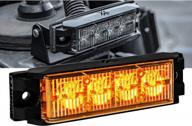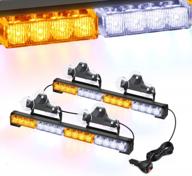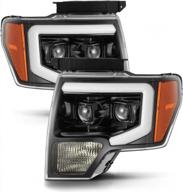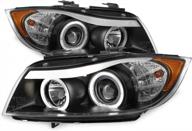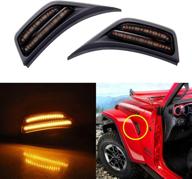
Roland FP-10 digital piano black Review
10
·
Average

Media
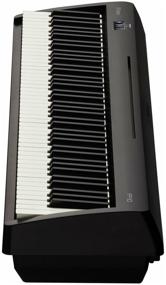

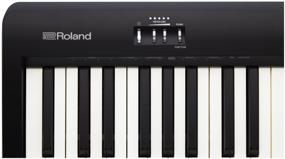
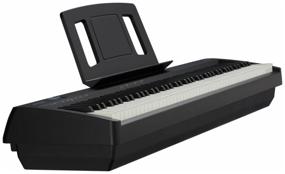
Description of Roland FP-10 digital piano black
- Minimalistic design, a minimum of buttons, and those that are glowing with "noble" white. Sound - details in the comments Bluetooth midi - you can connect synthesia, garageband or flowkey to your iPad without wires and unnecessary gestures. The method of attaching the music rest is a long straight recess that allows you to rest the tablet in this recess without the music rest itself (provided that the instrument is close to the wall)
- I won’t add anything new to the ones already listed, but I agree that the placement of the headphone output is a good decision from the visual side and questionable from the UX side. The complete pedal, in my opinion, is stupid, and is only needed to understand that you will have to buy another one for extra money. I already got it but haven't bought it yet. Sound - details in the comments
- Laconic design, key travel, collected sound, I liked the piano/pad combination
- Individual black keys click when pressed
- Excellent sound, deliver all stock sounds (especially harpsichord and electric organ). Nice keys, there has never been an acoustic piano, there is nothing to compare with, but the keys are very cool, you just want to play. The weight is acceptable, but picking it up from the delivery point was still fun. The presence of a port is more a necessity than an advantage, but nonetheless. It is possible to connect the phone via bluetooth, with the subsequent expansion of the functionality - it really delivered, a lot of new timbres (the accordion, church organ and ragtime piano delivered the most). Also more precise setting of the metronome, transposition and effects. There is learning to read music by ear with scores, a few songs with notes, and a diary that didn't work at all. Vibration when playing - a resonance is felt when playing at low octaves, especially on an organ and the like. Aftertouch is present and very delivering. The price is pleasant, good quality and functionality at this price is a rarity.
- It's hard to find fault with this model. I can only note that there is no midi-in/out. Personally, I didn’t need it, I had enough USB for programs, but whoever needs it will have to get out. The volume on some instruments is slightly higher than on others, so when you switch, you already remember what you should do more quietly. Unfortunately there is no line out.
- - Gorgeous full-size full-weighted hammer action 3-touch keyboard with dual rehearsal support - Great sounding, with string resonance emulation - Bluetooth MIDI (can be connected to DAW wirelessly) - Affordable price for such a model (bought less than 33 in 2022) - Operating modes: One keyboard, Split keyboard (individual - each by audio channel: left / right or together), Overdub mode (two timbres together) with the ability to balance between them. - Metronome. - Settings. Keys: sensitivity, transpose. Sound: piano tuning frequency, sound transparency, reverb. - Mobile application with the ability to fine-tune the instrument and learning mode (2 games "guess the note" and 17 melodies to learn).
- I don’t highlight obvious shortcomings, but rather points that you should pay attention to when choosing: - Rear headphone output. Pretty inconvenient to hook up. Rather, there should be a line-out at the back, but: - There is no line output. It is clear that this is a budget model, but it is surprising that even the older one (FP-30) does not have it either (only 2 for headphones). Although, for example, Casio has both for the same money, and in the right place. - The speakers are directed downwards. It is clear that this was done in order to fit larger heads. But the sound outlets are also only at the bottom. The decision is controversial. Perhaps it was necessary to make slots at the top (like the PX-160) or at the back (like the CDP-S100), or both (like the Yamaha). Because: 1) You have to listen to the sound reflected from the floor. 2) You can’t just put it on the table, even though there are legs. 3) The requirements for the stand are increasing: it should not cover the speakers and can resonate at high volume, rattle (if it is poorly made). - Lack of a complete description of all function keys. Perhaps everything really wasn’t worth writing on the front panel so as not to spoil the view, but at least it should have been indicated in the instructions. Hopefully this is the only set I have. - It is not possible to connect a block of 3 pedals, but this issue is resolved in the FP-30. - The supplied sustain pedal only works in 2 positions (on/off). You need to buy a DP-10. - Volume control - buttons. Not very comfortable. At least I'm glad that the step is small. For me, buttons are better than a resistive controller. But personally I would prefer an encoder. - Select from the keyboard only 15 timbres (although there are 36).
- Pretty good natural sound. I did not say that it is super, the sonority is still not enough when compared with the piano. But at the same time it sounds very natural and dignified.
- Keyboard: for a music school - it will do. If the level of the game is higher, then the speed of the keys is no longer enough. Let's figuratively say - "Flight of the Bumblebee" cannot be played on it, because the keys do not have time to return back when played quickly. On account of the knock of the keys. Well, I would not say that this is a big disadvantage. But I won’t play it late in the evening, because all the same, at night the roar from the keys is very audible and can cause discomfort to the neighbors. Not to be compared with a real piano, where the knock is almost inaudible. But in general, this is not a terrible drawback. Adjustable key hardness. The stiffness is, of course, adjustable, but if we take the smallest stiffness, then it is harder than that of the acoustic piano "Belarus". It is unrealistic to play at the highest hardness - why it was made is unclear. Moreover - the harder you set the level, the more programmatically the sound becomes muffled. No matter how hard you hit the keys with all your might, the sound does not grow and is quiet. And so I don’t understand, why muffle the sound when changing the stiffness? This is clearly some sort of scam. Therefore, I set it to the smallest hardness and it turns out - the most sonorous sound. There are few instruments and those that have a piano - 4 pieces do not differ much from each other. However, they are not very loud. But the fact that they sound very natural - it covers the lack of sonority Also uncomfortable pedal. Obviously it's cheap, but it could be better. The problem is in the designers or marketers who specifically did this to buy normal replacement pedals
- The sound is chic, bright, rich, bassy ! ! The ivory keyboard is very pleasant in terms of tactile sensations. The timbres of the piano in conjunction with the Pad are just super, also the dual piano with violins is balanced very competently (the violins are a little quieter), you can hear the reverb.
- No, for this money, no. Everything is just like that. Chattering black keys, even at maximum volume: clack-clap, clack-clack, like cdp (this does not apply to Privia), no complaints about white. The store did not pay attention to this, did not think that Roland could have something like that. Bluetooth can not be connected to the phone, then I found out that almost all owners of this Roland have it, it connects only to units and then to the iphone. In July 2022 the price is 38000r.









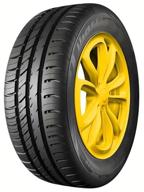
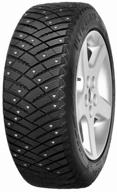
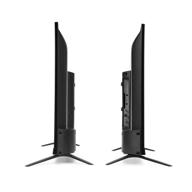
![lamphus solarblast 36" amber led traffic advisor light bar [sbta84-am] [ta controller] [19 flash modes] [ip 67 waterproof] directional yellow flashing emergency safety light bar for trucks vehicles logo](https://images.revain.org/blob/onltiig_eb02606c5b@128x128.jpg)

